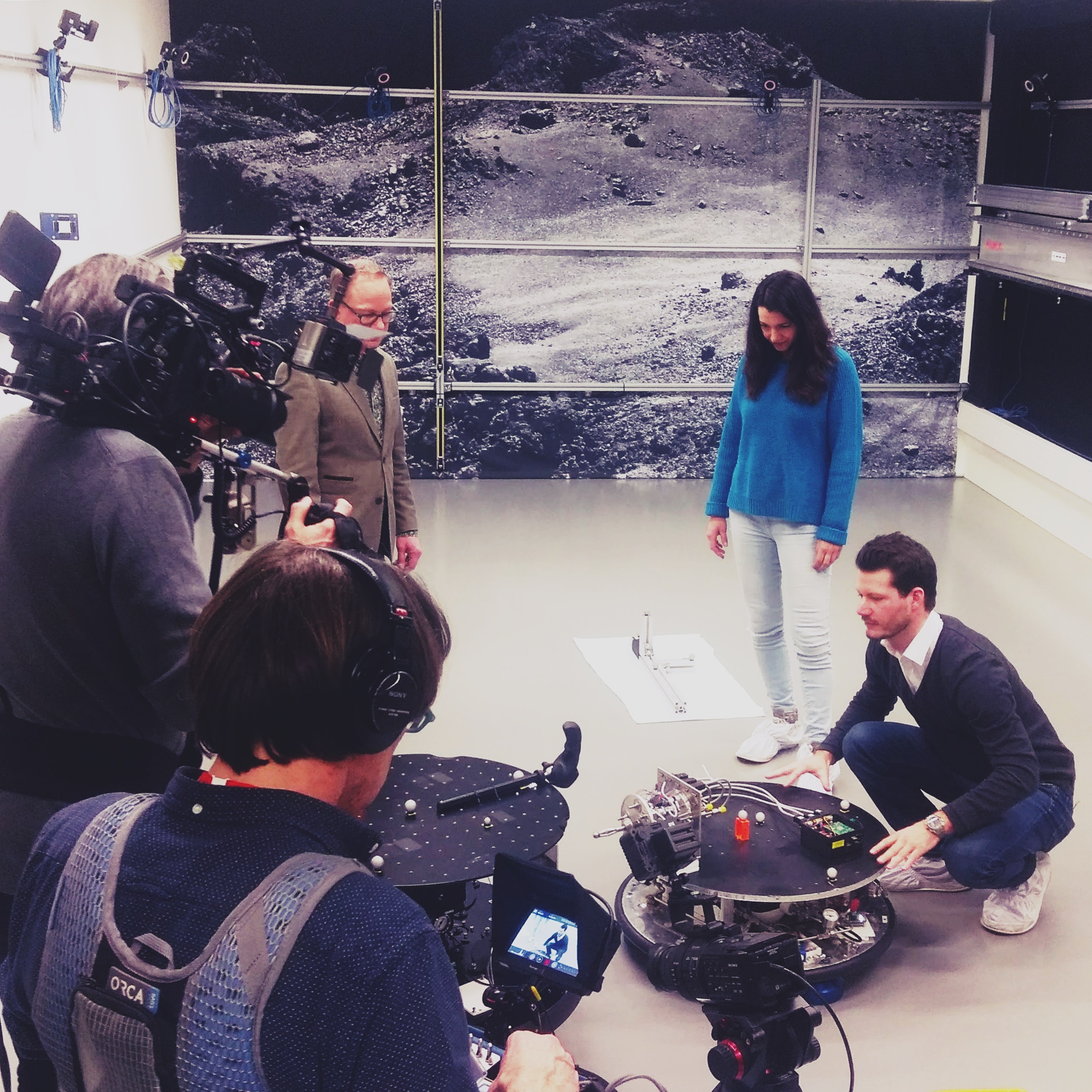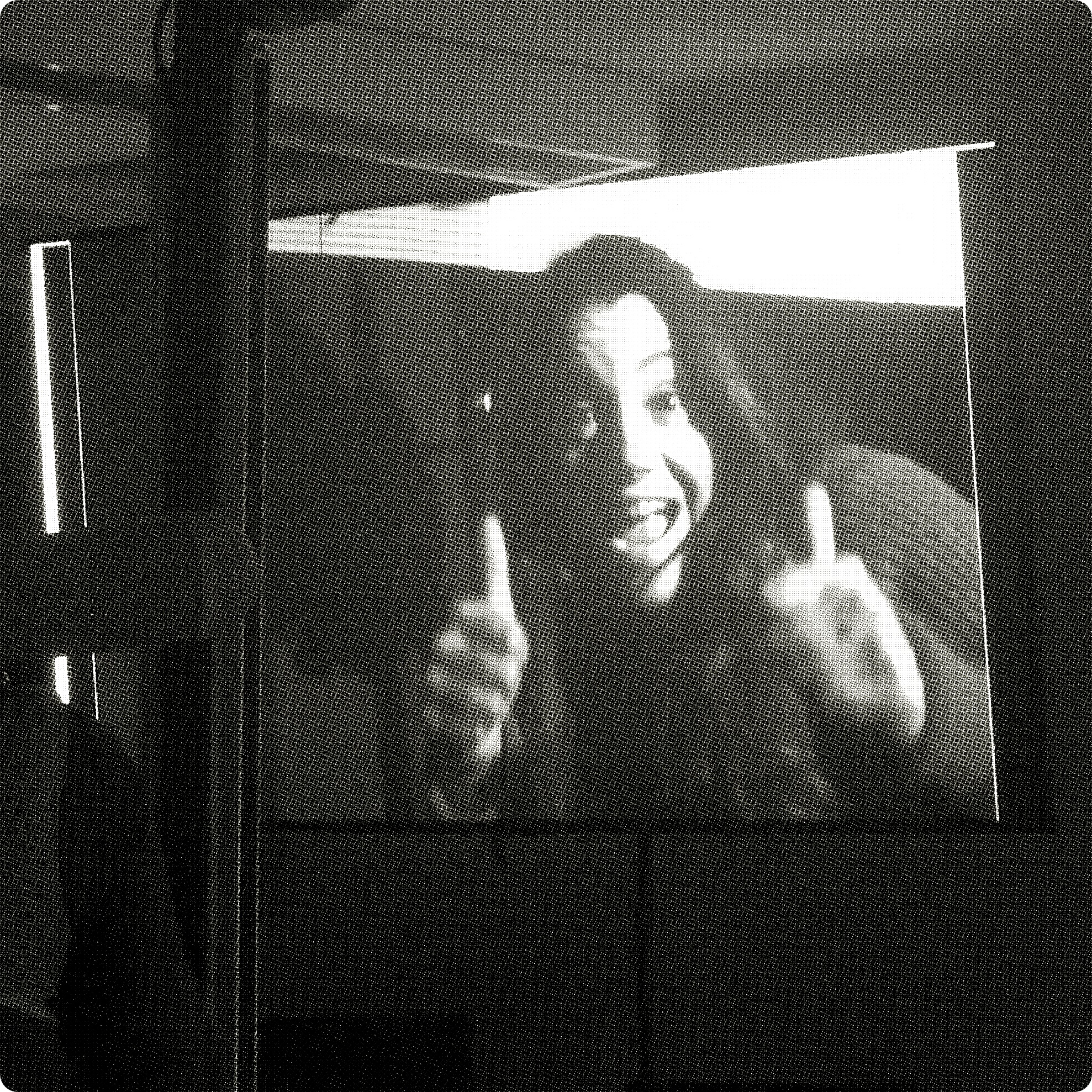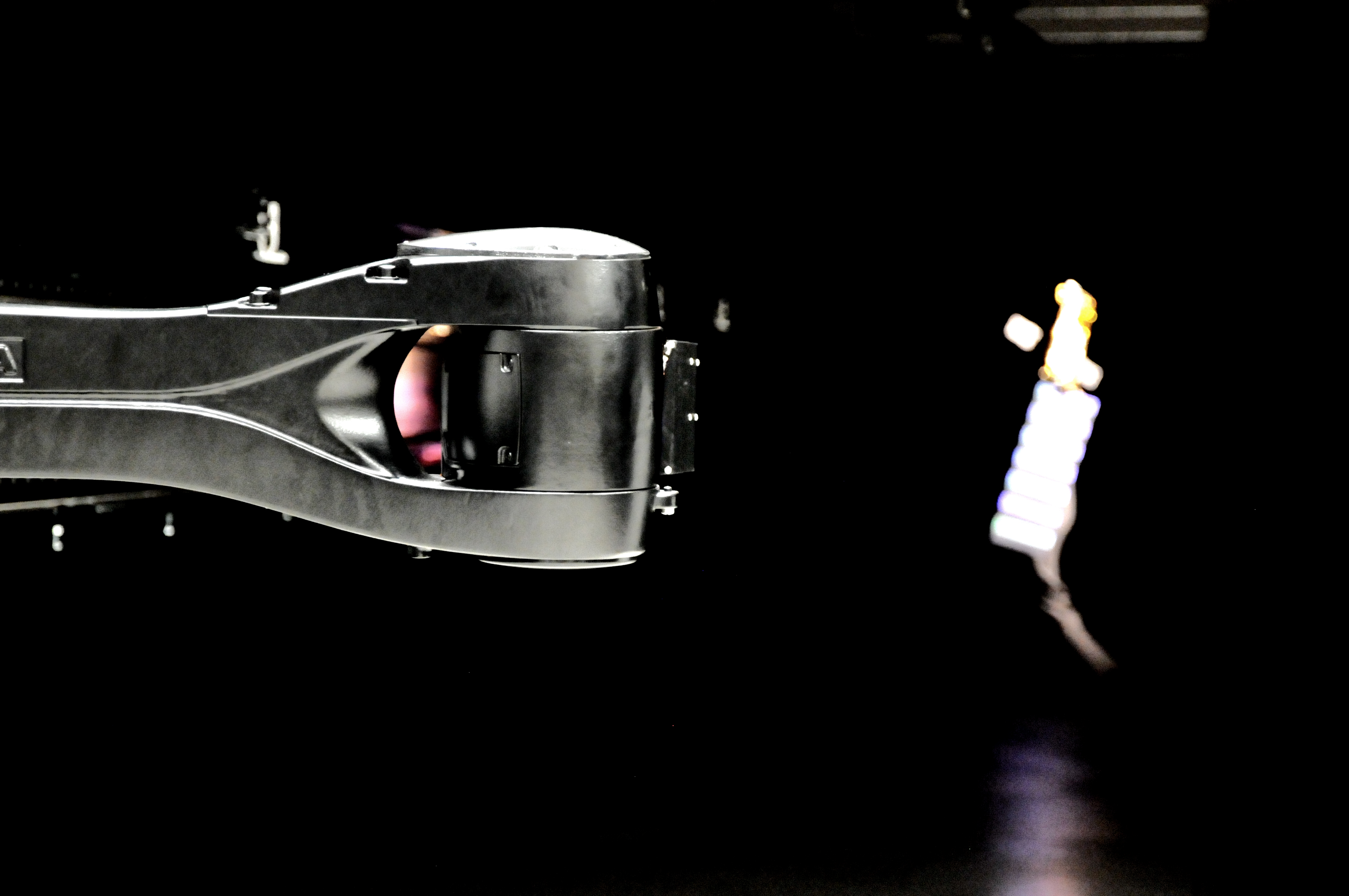On February 28 we hosted a television crew in ESTEC for FOCUS, a Dutch public TV weekly science programme. The topic of their forthcoming episode is “the fight against space debris”, so naturally they wanted to learn and see what ESA Clean Space is working on.
Clean space engineer Michel van Pelt comments: “It was thrilling to see how interested the crew was, and the effort they put into this shooting. We spent a whole day setting up and filming, for a half-hour programme.” The filming crew consisted of a director, a technician, a camera operator and a sound man, plus one of the two presenters of the show. Shooting took place all over ESTEC. The Columbus ISS module mock-up and a model of the Cupola window were used to show how spacecraft shielding works, while a retrieved section of a Hubble Space Telescope solar array made for great visualisation of the accumulation of tiny debris impacts on satellite surfaces.

In the Orbital Robotics and GNC Laboratory (ORGL) we simulated the final approach and capture of a debris chaser like e.Deorbit towards its target in the GRALS Test Bed. The GRALS Test Bed consists of a robot arm on a long track that can hold different types of payloads for GNC and robotics systems. For this experiment, a satellite mock-up was hung in the laboratory and GRALS’ robot was equipped with a camera and a gripper to simulate the final stage of close approach and capture. The camera simulated a vision-based camera sensor that is part of the chaser’s Guidance, Navigation and Control (GNC) system. It was linked to the GNC’s image-processing algorithms, which can recognise various features on the surface of the debris satellite, and therefore processes how the debris tumbles as part of the navigation solution of the chaser. The robot was also equipped with a working gripper prototype that was able to capture a simulated Launch ring Adaptor from the debris satellite. The film crew was able to produce fantastic shots in the Laboratory.

Irene Huertas: “It was a terrific experience to explain the research and development that we do for Cleanspace, and to show our laboratory environment. I sincerely hope it brings space and Cleanspace closer to home, when people understand what we do it suddenly doesn’t seem some magic hocus-pocus of space engineers, and they show an enormous amount of interest in the engineering and the science behind it, and how it affects our daily life on Earth.”
 The presenter continually asked questions to our experts, to help the audience understand what they are seeing and how this connects to the overall story of space debris mitigation. The crew was fascinated by all they saw in ESTEC, and of course this led to discussions that were not scripted beforehand. Michel van Pelt: “For instance while looking at the shielding on the Columbus module, the presenter asked about the purpose of Columbus and ESA’s role in the ISS. So to be able to represent ESA in a broader context you need to know a bit more than just your particular project or study. And explain things concisely, applicable to television rather than a specialised audience.” At one point the presenter asked whether it was the large centre window of Cupola that was recently damaged by an impact. “I guessed it was not the centre window, because there are more side windows and thus a higher chance one of those was hit. We filmed it with me very authoritatively stating it was a side window, but immediately after we did some frantic searching and calling to make sure that was correct. Fortunately I guessed right and we did not have to reshoot that part.”
The presenter continually asked questions to our experts, to help the audience understand what they are seeing and how this connects to the overall story of space debris mitigation. The crew was fascinated by all they saw in ESTEC, and of course this led to discussions that were not scripted beforehand. Michel van Pelt: “For instance while looking at the shielding on the Columbus module, the presenter asked about the purpose of Columbus and ESA’s role in the ISS. So to be able to represent ESA in a broader context you need to know a bit more than just your particular project or study. And explain things concisely, applicable to television rather than a specialised audience.” At one point the presenter asked whether it was the large centre window of Cupola that was recently damaged by an impact. “I guessed it was not the centre window, because there are more side windows and thus a higher chance one of those was hit. We filmed it with me very authoritatively stating it was a side window, but immediately after we did some frantic searching and calling to make sure that was correct. Fortunately I guessed right and we did not have to reshoot that part.”
Michel van Pelt: “I think it is important to get the Clean Space message out to the general public, and moreover I see it as a part of my work to explain people what we do with their tax money. But it is not a burden, I truly enjoy explaining people about space”.
The TV programme, in Dutch, is available online at https://www.ntr.nl/Focus/287/detail/Strijd-tegen-het-ruimteschroot/VPWON_1283739





Discussion: no comments